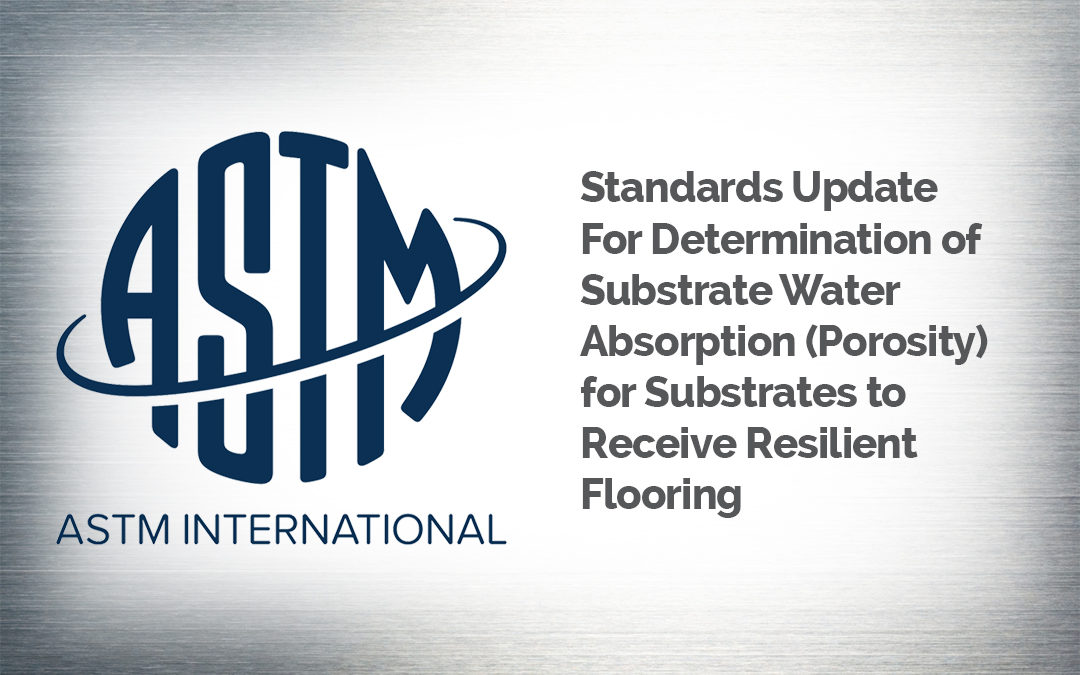Editor’s Note: This is an important update for all of our retailer and installer friends and colleagues courtesy of our technical manager Jim Kups and Novalis Innovative Flooring …
The F.06 Resilient Flooring Committee of ASTM (ASTM.org) recently approved and published ASTM F3191-16 Standard Practice for Field Determination of Substrate Water Absorption (Porosity) for Substrates to Receive Resilient Flooring. Quite a mouthful to say but a very needed standard for our industry – in my mind and that of many of my peers. This was brought together by a group of resilient tech guys (like me), adhesive gurus, and concrete specialists all under the leadership of Dean Kraft. Toward the end of the process we even had flooring sealant and coatings manufacturers piped into the conversation.
The basics are that we felt the need for a standard methodology for determining if a substrate/subfloor is porous or not, before installing a non-porous resilient floor covering. When discussing this over coffee before proposing the standard to the F.06 Committee, it was noted that many manufacturers (including the adhesive industry) either don’t agree or don’t publish a method for determining this, yet they all have different methods for installing or troweling based on porosity. It also had to be something that the average installer could perform at any time right up to application of the adhesive with things that were already in his hands or toolbox.
After some discussion, we came to the standard as it’s written. It covers preparation of the substrate before applications of the water, time limits and recording. A full version of the standard is available for purchase at ASTM.org. Just search for F3191 in the library.
While you’re in there, be sure to update your copies of all the substrate preparation documents that may affect the type of work that you do:
ASTM F710 Standard Practice for preparing Concrete Floors to Receive Resilient Flooring
ASTM F1482 Standard Practice for Installation and Preparation of Panel Type Underlayments to Receive Resilient Flooring
ASTM F1869 Standard Test Method for Measuring Moisture Vapor Emissions Rate of Concrete Subfloor Using Anhydrous Calcium Chloride
ASTM F2170 Standard Test Method for Determining Relative Humidity in Concrete Floor Slabs using In Situ Probes
ASTM F2419 Standard Practice for Installation of Thick Poured Gypsum Concrete Underlayments and Preparation of the Surface to Receive Resilient Flooring
ASTM F2471 Standard Practice for Installation of Thick Poured Lightweight Cellular Concrete Underlayments and Preparation of the Surface to Receive Resilient Flooring
ASTM F2659 Standard Guide for Preliminary Evaluation of Comparative Moisture Condition of Concrete, Gypsum Cement and Other Floor Slabs and Screeds Using a Non-Destructive Electronic Moisture Meter
ASTM F2678 Standard Practice for Preparing Panel Underlayments, Thick Poured Gypsum Concrete Underlayments, Thick Poured Lightweight Cellular Concrete Underlayments, and Concrete Subfloors with Underlayment Patching Compounds to Receive Resilient Flooring
…to name a few. I know these are in my installation instructions and also in many of the other installation instructions of my competitors. Knowing what’s in these documents and following them will help you in the event of an issue during the installation. All of them cost between $40.00 and $55.00, so it’s not a huge investment. And keep in mind that they do get reviewed, corrected or changed every 5-7 years so you want to be sure that you have the current versions handy.
That’s it for this installment, next up will be a discussion on pH levels in your substrate as this is currently being tackled for a new and updated standard as well.
To contact us with questions or comments, go to https://novafloor.us/contact/
For information about installing NovaFloor LVT, go to https://novafloor.us/tech-info/

Jim Kups, Technical Manager, North America, Novalis Innovative Flooring


